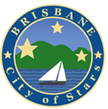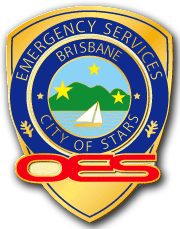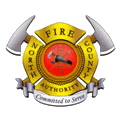Chapter 1 - Beginnings
| Introduction | Next Segment |
>>>>>YOU'RE@ Chapter 1 -- "Beginnings" -- Page 1 >>>>>
"Those early years were the best times of my life. Our dairy hands used to go to their early morning chores singing. With glowing orange lanterns in their hands, they would soon disappear in the gray fog or mist."
-Tillie Mozzetti

Charles "Bud" Mozzetti
>>>>>YOU'RE@ Chapter 1 -- "Beginnings" -- Page 3 >>>>>
The Legacy
"Here they need not make bricks for houses..."
To discover the early history of Brisbane, one need look no further than the oyster shell mounds found along the canyons and ravines of its creeks. From those mounds, archaeologists have unearthed relics of the first inhabitants of the area: the Costanoan Indians.
It is believed that the Costanoans lived an idyllic life. As Dorothy Radoff, Brisbane's resident historian, has recorded, "Here they need not make bricks for houses. Their dome-shaped dwellings of boughs and tules kept them cozy and the San Bruno Mountains provided shelter from the fogs and winds of the west. Nor did they need to cultivate the land. Squaws gathered watercress in neighboring marshes, hills teemed with rabbits and deer, and a leisurely stroll on the shores of the Bay netted an abundance of shellfish."
For all its beauty and calm serenity, the Costanoan culture was doomed by the advance of European civilization. By 1776, the Spanish Conquistadors had arrived. The Franciscan missionaries soon followed leaving numerous large land grants in their wake.
For a time, the Costanoans coexisted with their missionary neighbors in peace. With the coming of Mexican rule, the lands controlled by the Mission were released to private enterprise.
It was time for a new group of people to come upon the land.
Grandees and Gamblers
One of the new settlers was a man named Jacob Lesse. Lesse, who first came to California in 1833, took possession of the land grant entitled Rancho Canada de Guadalupe la Visitacion y Rodeo Viejo in 1838, three years before he received the official title to the land. The grant covered 9,500 acres and included three separate valleys: La Visitacion, Rodeo Viejo and Canada de Guadalupe, the valley which now contains the city of Brisbane.
Around the year 1843, Lesse traded his grant to Robert T. Ridley for the Rancho Calloyami in Sonoma. Ridley never lived on the property nor developed it to any extent. He did, however, manage to lose most of it in a lawsuit which involved a gambling debt. In the subsequent foreclosure proceedings, Charles Crocker purchased the bulk of the property, a little over 3,000 acres, for $4,000.
"Legend has it..."
As the great landlords made their imprint on the history of Brisbane, another type of man was also making his mark. According to local legend, during the 1 850s, Joaquin Murieta used the area as a refuge from the local police. Depicted by some as a notorious desperado and by others as California's Robin Hood, Murieta preyed upon the San Francisco to San Jose stage line from Costanos Canyon. Although Murieta was eventually hanged by the San Francisco Vigilante Committee, his fame lives on in the folklore and legend of the area.
In 1933, John Loheit, one of Brisbane's most poetic early settlers, gave the following description of Murieta's legacy: "Ofttimes when in a troubled state of mind I light my pipe and for an hour or two wander through the Brisbane woods above Highland Park.... Legend has it that these woods furnished a rendezvous for Joaquin Murieta. The great oak with its long horizontal bough still stands, on which tradition says he hanged his victims. Rumor has it that here somewhere he cached part of his ill-gotten gain. Who knows, but someday a wanderer here may unearth his private hoard
If Murieta's fortune remains hidden in the earth, other enterprising men were able to extract riches from the ground. In 1895, the Crocker Estate Company leased a section of Crocker's Visitacion Ranch to two men named Warren and Malley for the rights to exploit the quarry on its property. For use of the quarry, the Crocker Company was paid $100 a month, plus "rock royalties." By the turn of the century, the quarry employed over 100 workers.
With its temperate climate and ideal location, the area could not for long be the exclusive property of quarry workers and ranch hands. By 1900, with frontier conditions fading across California, it was inevitable that people would attempt to settle in this pleasant site overlooking the buoyant waters of the Bay.
Early Pioneers
"They lost a lot of money in here..."
For thirty terror-filled seconds on the early morning of April 18, 1906, the San Andreas Fault shifted. Known to history as the San Francisco Earthquake, this tremor in the earth's crust caused enormous fires, devastated the city, and left over 250,000 people without homes.
In the wake of this calamity, land developers anticipated a great boom in the value of real estate. Soon, their eyes turned to the rich potential of the Guadalupe Valley. In 1908, the American Realty Company began terracing a semicircle to build homes for the earthquake victims. In doing so, they named their proposed subdivision the "City of Visitacion."
Seemingly, it was an idea whose time had come.
Unfortunately for the speculators, it was also an idea that far outstripped their resources. Their Utopian design included such amenities as a fire station, a school house, a city hall, a community center, and streetcar and railroad lines.
In reality, the city lacked the most basic necessities. The streets were little more than cow trails. In addition, the water lines, sewers, gas and electric lines only existed on the developers' blueprints. Finally, while the 25 by 100 foot lots were priced at $1,300, similar lots elsewhere on the Peninsula sold for less than half the price.
"The developers lost a lot of money in here," recalls Delbert "Bud" Sweet, one of Brisbane's earliest residents. "One of them, I think, killed himself over it. They did a lot of grading and put in all the old rock gutters that were here. They even had plans for a streetcar line up San Bruno Avenue to connect with San Francisco. Those were the plans they had... but none of them ever matured."
"Nothing but wide open spaces and a mere five famiIies..."
Despite the grandiose plans of the realtors, only a few homes were actually constructed. From those early pioneers, however, Brisbane can boast a number of its most prominent names.
Emile and Julie Allemand emigrated from their native France and purchased a lot and home on Inyo Street. Subsequently, they built the Brisbane Hotel, the community's first major structure. Still standing today, the hotel can be seen at the comer of Mariposa and San Bruno Avenue. Over the years, the hotel also served as the town's first grocery store, post office, general merchandise store, and hunting club.
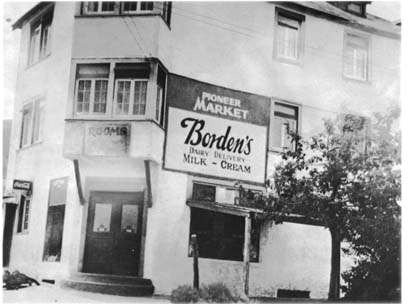
Soon after the arrival of the Allemands, Joseph and Charles Mozzetti established a large dairy and poultry ranch in the meadow below their home. In 1916, their brother Steve arrived from Northern Italy with his wife, Tillie, and their infant daughter, Lena.
"At that time," remembers Tillie Mozzetti, "there was nothing but wide open spaces and a mere five families living in town -- us, the Sweets, Naughtons, Allemands, and Duncan Washington.'
Life was hard for Tillie Mozzetti and rivaled the trials and tribulations of the hardiest frontier wife. Tending to the needs of her husband and daughter was only a small part of her routine. In addition, she prepared all the meals for the 18 dairy hands who handled the cows and poultry, chopped firewood, carried water to the house in 10-gallon cans, cleaned the kerosene lamps, and washed and hung the clothes by hand.
Still, she recalls those days with fondness. "Those early years were the best times of my life. Our dairy hands used to go to their early morning chores singing. With glowing orange lanterns in their hands, they would soon disappear in the gray fog or mist."
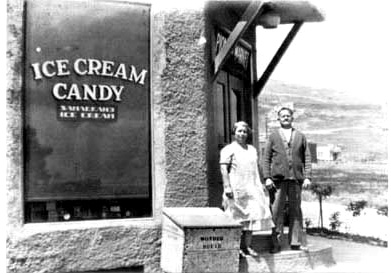
"Oh, it was country..."
Along with the Allemands and Mozzettis, other pioneering families put their mark upon the area. In 1912, the Sweets formed the Improvement Club, which later changed its name to the Social Club. In 1917, the Linde family arrived and began building their home at Number Four Solano Street.
At that time, only a few residents had any kind of piped water coming into their homes. Up in the hills overlooking the Bay, people were forced to carry water in 25-gallon containers. In response to this situation, Linde and his sons, Ted and Heine, brought in water equipment and dug trenches for pipelines to bring water to such early residents as the Fitzgeralds, O'Neils, and Staffords.
Despite having only 28 residents, the town of Visitacion was able to finance a number of community improvements during the 1920s. For the most part, life remained simple and rural. The valley continued to serve as grazing land. Hunters stalked the surrounding meadows for geese, wild turkeys, and rabbit.

Winnie Naughton Wilson is a member of one of those pioneering families. She remembers both the difficulties and pleasures of life in those days. "We were living in San Bruno at the time and my father wanted to get us a house to live where it was nice weather. I had an aunt who lived in South City and she said, 'Why don't you come on out to Visitacion?' So we moved out here with a horse and wagon, with furniture and everything.
"Oh, it was country. We used to have chickens and the roosters crowing. You only had a wood stove here and kerosene lamps or lanterns. There was no electricity, The roads were all clay roads. You'd come in with too heavy a car or truck, and you'd get stuck. Two or three times, some real estate guy was going to start selling, but there was no transportation here. You either had to have a horse or there was no way to get out here.
"In those days, we had to walk from Brisbane all the way up by the Cow Palace to go to a one-room school. My brother and sisters, and the Lindes, and Bud Sweet, and the Mozzettis' three children would all walk roughly two miles, maybe two and a half miles.
"Everything else was horse and buggy in those days. My mother used to go to South City shopping with a horse and buggy every other day with us kids in it. She had a surrey with a two-seat and we used to drive over to do our shopping.
"We used to get clams and mussels down by the Bay. We used to go swimming right here. Many a times I played hooky from school. It's a wonder I know what I know today. I used to take my brothers and we'd all go down and have our lunch, and go swimming and boil up some clams. It was beautiful in those days. I loved it.
At this time, the Bay came up to the corner of Visitacion Mall and Old Country and was a popular swimming spot.
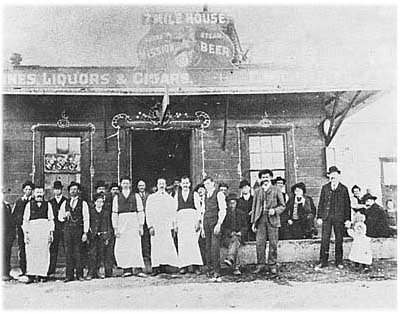
"Don't forget that we had bootlegging going on..."
If its out-of-the-way location gave Visitacion a certain rural charm in the days following the First World War, it also helped attract a new class of people to the area: bootleggers. Following the introduction of Prohibition in 1918, a number of San Francisco mobsters employed moonshiners to manufacture liquor in Costanos Canyon. As a result of these activities, the area soon became known as a center of speakeasies and gambling dens.
'Don't forget that we had bootlegging going on," relates Winnie Wilson. "After we moved out of a house down by the Brisbane Inn, some bootleggers got in. Us kids used to hickey them if we saw anyone coming. They used to dump their mash, like apricot mash, all over on the side there. They'd hide, but they finally caught them anyway.
John Wilson, Winnie's husband, was also aware of some of the slightly less-than-legal activities occurring in the area. "During Prohibition, we had these boats come in off the ocean and throw the stuff overboard and leave it, any way to get it in there," he remembers. "The bootleggers threw them off out in the ocean and let the stuff float in. They had guys laying there waiting for it."
As a resident of the area since 1915, Ted Linde recalls that Visitacion enjoyed quite a boom during the dry days of the 192Os. "Visitacion Valley was an extremely popular place for many people during the early days of Prohibition because of the many natural creeks and springs flowing through the property. Large crowds would gather at the Visitacion Ranch Creek to gather watercress and to sample and bottle the water. This delicious tasting water had an unusual whiskey-like kick to it due probably to the sour mash dumped down the creek from a number of illegal stills located back in the hills."
Despite this brief business boom, the people of the area were glad enough to see Prohibition go. In 1933, when the people of San Mateo County were asked to vote on repealing Prohibition, the tally came to 2,282 nays and 20,051 ayes. The era of moonshining and bootlegging had come to an end.
At the close of nearly three decades of land settlement, the still sparsely populated city of Visitacion had become home to many an immigrant. For some, the area was rich in financial opportunity. For others, it was a rural sanctuary to be protected. Finally, for a third, less savory population, the area afforded a chance to operate beyond the reach of the law.
With the advent of the Great Depression, all three groups were to find themselves sorely tested.

| Introduction | Next Segment |

